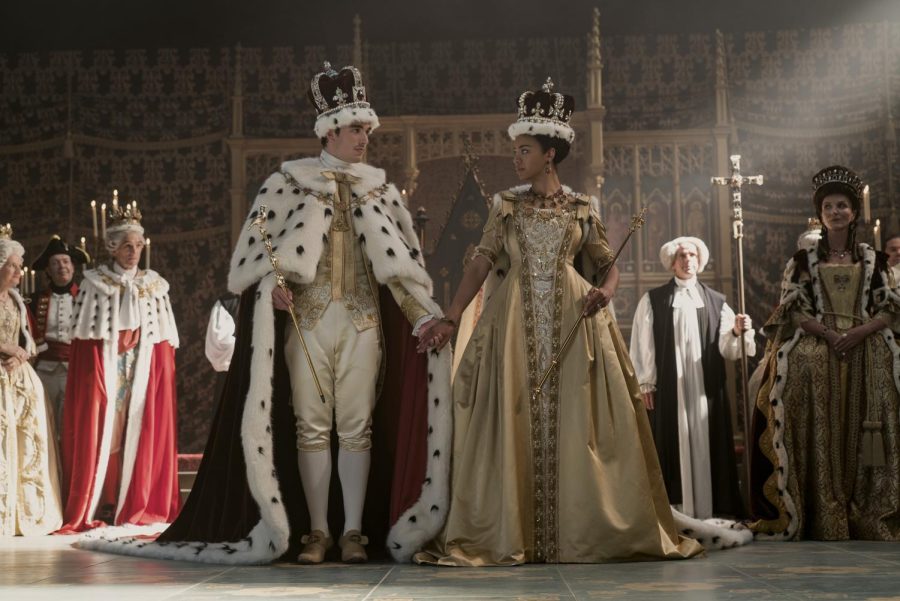“Queen Charlotte’s” King George is illustrated in a refreshing, yet historically accurate, light
Queen Charlotte and King George III’s coronation as depicted by “Queen Charlotte: A Bridgerton Story”.
May 15, 2023
On May 4, Netflix released a limited spin-off series from the Bridgerton Universe: “Queen Charlotte: A Bridgerton Story”. This television show highlights Queen Charlotte and King George III’s love story, along with its struggles.
People often recall King George III as Great Britain’s ‘Mad King’ following the Revolutionary War. Audiences also see the Mad King illustrated in Lin Manuel-Miranda’s popular historical piece, “Hamilton”. Queen Charlotte, however, paints King George through a new lens: the lens of his beloved wife.
King George III suffered from porphyria, a hereditary illness characterized by mental confusion and hallucinations. In 2005, it was discovered by analyses of hair samples that the monarch’s illness was accelerated by arsenic poisoning, common in both makeup and medicine at the time.
Throughout the Hanoverian Era of England, the royal succession of King George I to Queen Victoria, King George III was the only sovereign to not take a mistress. Furthermore, the couple maintained a healthy relationship for many years. They even shared bedchambers, which was practically unheard of at the time.
In “Queen Charlotte,” audiences follow the young queen as she moves to a new country to marry a man of whom no one will speak. This is historically accurate; Queen Charlotte had never met King George before their wedding day.
Netflix’s depiction of the monarch’s relationship is both enlightening and heart-wrenching, as audiences see King George III’s descent into madness through the eyes of his loving wife.




